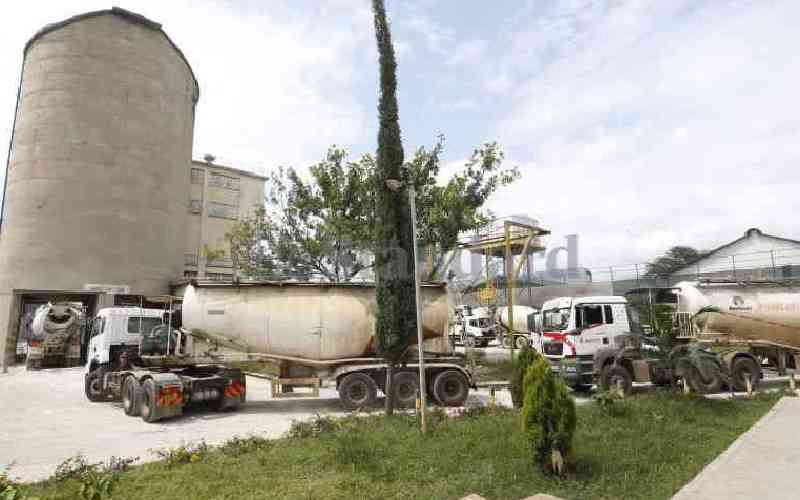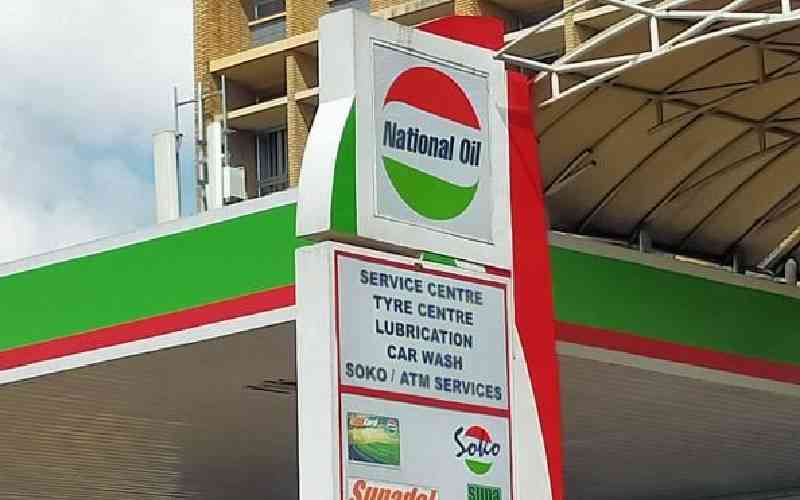According to property firm Knight Frank, even though the rent of prime warehouses improved to $6 (Sh660) per square metre in the first half of this year, it was still well below other cities including Senegal’s Dakar, whose average rent was $9.8 (Sh1,078) per square metre.
However, like other listed cities such as Accra, Luanda and Lagos, rental prices of Dakar have previously hit highs surpassing Nairobi by far.
Luanda’s rental prices, for example, rose over $20 (S2,200) per square metre in 2015 at a time when Nairobi’s pricing was at $4 (Sh4,400) per square metre.
But in comparison to pre-pandemic rates, Nairobi recorded the highest increase in average prime rents across Africa, from $4.70 (Sh517) per square metre in 2018 to $6 per square metre.
“Indeed, in some cities, land values in established industrial nodes have grown greatly, by 58 per cent (Lagos) and 42 per cent (Nairobi) between 2015 and 2021,” wrote Knight Frank.
“In addition, infrastructure developments such as the Chinese-built Ring-road network in Nairobi are prompting some occupiers to explore areas beyond traditional industrial hotspots.”
As a result, the real estate company notes, these areas in the periphery of some cities have seen industrial land values appreciate tremendously, with a 35 per cent increase in the Namanve region (Industrial Park - Uganda) and a 34 per cent increase in Nairobi between 2015 and 2021. “With access to urban industrial land expected to remain a key barrier in the sector due to competing land uses, the value of prime industrial land in some cities appears set to continue rising,” Knight Frank says.
The city also recorded stellar growth in development infrastructure, with purpose-built warehousing developers delivering over 170,000 square metres of speculative prime warehousing over the last five years.
A further 400,000 square metres is expected to come onto the market by 2024. American real estate investment trust Prologis projects that net effective market rent growth will set a record in 2021, exceeding 10 per cent. This is as rents continue rising at a record pace.
In the latest report of its Industrial Business Indicator, the firm notes that rents rose by four per cent in the second quarter while vacancies fell to 4.1 per cent.
“Demand remains high for large, good quality, modern facilities with prime warehousing recording absorption rates of 80 per cent,” writes Tilda Mwai, a senior analyst at Knight Frank. “Coupled with attractive yields, anecdotal evidence suggests that investor interest in the sector is steadily growing. This has been demonstrated by key transactions such as Grit’s landmark sale and leaseback deal with Orbit Africa earlier on in the year.”
Knight Frank says demand for warehousing and logistics will be on the rise with the price soaring as well. Anthony Havelock, head of occupier services and commercial agency at Knight Frank Kenya says Nairobi’s position in driving East African trade cannot be underestimated - being a key regional hub.
“With key infrastructure projects being delivered, we anticipate demand for best in class warehousing will continue to grow as this sector continues to mature,” he says.
“Although the new projects were initially slow to lease, we have seen the sector gain momentum - indicating the emergence of a distinct two-tier market.”
The key factors driving prime warehousing demand, notes Knight Frank, are an uptick in online retail sales, which is expected to bolster demand for warehouse and distribution space. Others are the fast-paced development of major industrial corridors, and State ramping up initiatives on manufacturing and industrialisation to boost economic activity in the wake of the pandemic.
“While the penetration of e-commerce was already rising pre-Covid 19, online sales revenues increased by over 28 per cent to $27 billion (Sh3 trillion) in 2020 compared to 2019 across Africa,” notes Knight Frank.
“This uptick in online retail sales is set to continue, with e-commerce revenue expected to almost double to $46 billion (Sh6 trillion) by 2025, according to Statista.” Knight Frank also estimates that there is over $400 billion (Sh44 trillion) worth of rail and road developments taking place across the continent.
These developments are set to drive increased intra-Africa trading. “In Eastern Africa, for example, increased infrastructure development along the northern corridor that links Kenya to Uganda and the Democratic Republic of Congo has resulted in over 150,000 square metres of prime warehousing being developed in Nairobi alone in less than six years; almost 90 per cent of all the stock delivered in this period.”
The report also notes that governments are facilitating the development of industrial parks within special economic zones to drive foreign direct investment. While rental and land prices in industrial nodes hike, the pandemic hammered prices of property elsewhere, with research showing a lull in property markets.
A Macro Strategy Report published by EFG Hermes, a financial service company, which analysed land prices in the high-end market segment, showed that the upper-middle and satellite towns saw prices drop in the first quarter of 2021 compared to any period in the last four years.
“In the middle-income segment, current land prices are also lower than their peak levels over the past four years, but not by as much as the high-end segment,” EFG Hermes said.
And a property survey by realtors HassConsult showed that houses in Nairobi recorded a 1.7 per cent drop in price in the past 12 months to mid-2021, driven by an oversupply of modern apartments in upper-middle-class areas like Kilimani and Kileleshwa. Apartments on average recorded a 5.8 per cent drop in price during the period.
This was far ahead of detached houses whose prices dropped by 1.7 per cent, and semi-detached units whose prices went up by 0.7 per cent on average. But rents continued to rise as demand for semi-detached houses and apartments in areas such as Lang’ata, Ruiru and Parklands increased.
And in the first half of 2020, according to Knight Frank, prime residential rents declined at a slower rate of six per cent over the past 12 months to June. “Prime retail rents decreased from $4.2 per square foot per month to $4 per square foot per month,” noted the real estate firm. The decline was mainly attributed to the economic slowdown, reversal of various tax reprieves in January resulting in less disposable incomes and re-introduction of containment measures in March.
 The Standard Group Plc is a multi-media organization with investments in media
platforms spanning newspaper print operations, television, radio broadcasting,
digital and online services. The Standard Group is recognized as a leading
multi-media house in Kenya with a key influence in matters of national and
international interest.
The Standard Group Plc is a multi-media organization with investments in media
platforms spanning newspaper print operations, television, radio broadcasting,
digital and online services. The Standard Group is recognized as a leading
multi-media house in Kenya with a key influence in matters of national and
international interest.
 The Standard Group Plc is a multi-media organization with investments in media
platforms spanning newspaper print operations, television, radio broadcasting,
digital and online services. The Standard Group is recognized as a leading
multi-media house in Kenya with a key influence in matters of national and
international interest.
The Standard Group Plc is a multi-media organization with investments in media
platforms spanning newspaper print operations, television, radio broadcasting,
digital and online services. The Standard Group is recognized as a leading
multi-media house in Kenya with a key influence in matters of national and
international interest.










